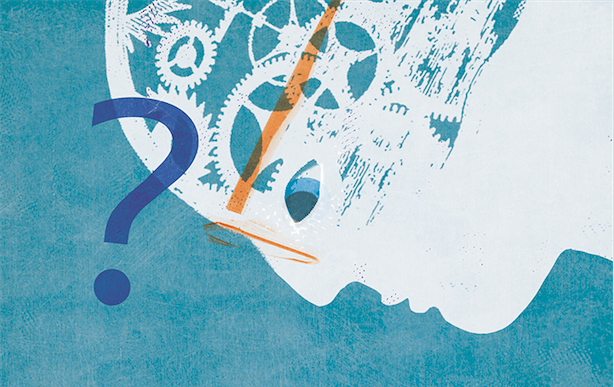Thirty four years ago I published Abandon Affluence and Growth, with negligible effect, so it has been hugely satisfying to see the recent emergence of a degrowth movement. However, I believe some aspects of the movement need greater attention. Degrowth transition strategies especially should deal more effectively with the sheer magnitude of the problem we are facing.
The magnitude of the problem, the severity of the limits
I think many/most within the movement do not grasp the magnitude of the degrowth problem, nor its profound implications. Many proceed as if what is required is a scaling back of the current socio-economic system. But when the magnitude of the sustainability overshoot is understood it is clear that only extremely radical system change can enable a sustainable and just world.
The essential element in the global predicament is that consumer-capitalist society is
far beyond levels of production and consumption that could be sustainable or just, or provided to all people. Advocates of degrowth recognise that reductions are needed, but there seems to be little understanding of just how huge they must be. Following is an indication of the reasons why they must be in the region of 90%. Unless this is understood and accepted, solutions put forward will be mistaken and ineffective.
One well known indicator is WWF’s Environmental Footprint, which puts the average Australian per capita use of productive land at 6–8 ha. If the 9–10 billion people expected to be on earth by 2050 were to live as Australians do now, up to 80 billion ha of productive land would be needed. But there are only about 12 billion ha of productive land on the planet. If we set aside one third of it for nature then each Australian would be living in a way that would require about 10 times as much productive land as all people could ever have.
However, other indices suggest the need for even
greater than 90% reductions in rich word per capita levels of production and consumption. For instance, the iron ore and aluminium consumption rates for the ten largest consuming nations are in the region of
80 times the average for all other nations.
And the limits predicament will soon become far more serious than the above numbers assume, because in coming years many crucial scarcities, problems and costs will worsen at an accelerating rate. (e.g. see
here and
here)
The core point is therefore that the degrowth required must be far greater than most people in the movement seem to realise. The task is to envisage socio-economic forms which enable a good quality of life for all the world’s people on perhaps a mere 10% of present rich world per capita resource consumption.
The task is therefore not reduction in scale
“Degrowth” is in fact not the most appropriate term for what needs to be done. If the task was only to reduce resource use by say 10%, then we could just cut industries and forms of consumption in present society by 10%. But the task is to reduce by such a very large amount that it can only be achieved by shifting to radically different economic, political, social, settlement and cultural systems. The central concerns of The Simpler Way project are to explain the nature of these required new systems, to show that they could be easily implemented (if we wanted to), and that they would significantly improve the quality of life. Following is an indication of the basic principles.
Mostly small, highly self-sufficient local economies, devoting local resources to meeting local needs, with little intra-state let alone inter-state or international trade. Transition from globalized to localized systems.
A new economic system, which is not driven by profit or market forces and ensures that needs, rights, justice, welfare and ecological sustainability determine the purposes to which limited resources are devoted. The important production, distribution and development decisions must be made by town assemblies according to social and ecological needs. National economies would be far smaller than at present, and steady state. The GDP would be irrelevant.
Most governing would be in the form of small local communities taking cooperative and participatory control over their own local systems, via town assemblies, voluntary committees and work parties (“working bees”).
A profoundly different culture, one that does not value luxury, affluence, possessions and wealth, but focuses on non-material sources of life satisfaction. In addition the predominant outlook would have to be cooperative not competitive, and much more collectivist and less individualistic. The enormity of such a cultural transition contradicting some of the core Enlightenment ideas and values could hardly be exaggerated.
The more comprehensive vision (
The Alternative Society) generally corresponds to the nature of many existing eco-villages and to goals found within the Transition Towns movement.
The crucial point here is that only in small and highly integrated communities can per capita resource and ecological costs be dramatically reduced. My study
Remaking Settlements, derives detailed estimates indicating that these procedures could cut the energy, dollar and footprint costs typical of a Sydney suburb by more than 90%, while improving the quality of life. Reductions of this magnitude are achieved within the
Dancing Rabbit Eco-village in Missouri.
Communities will function satisfactorily in these ways only if there are strong dispositions to cooperate, help others, take social responsibility, support community events, contribute to working bees and prioritise the public good. Much productive and maintenance activity will occur spontaneously, in other words it will be carried out by citizens when they see something needing attention. The experience of living in the conditions described tends to automatically elicit and reinforce these pro-social dispositions (see on values in TSW:
The Alternative Society). There would still be an important, though much reduced, role for some more distant and centralised institutions, such as teaching hospitals, universities, steel works, large and complex factories, railway systems, wind farms and (small) cities. The elimination of most of the present vast quantity of unnecessary productive effort would enable considerable increases in resources available to flow into arts, education and socially desirable R&D.
Although this vision involves very low per capita consumption rates it does not imply hardship or deprivation. It involves shifting to lifestyles and systems which enable all to enjoy non-material sources of purpose and satisfaction.
It should be emphasized that the core Simpler Way argument is that there is no alternative. The main hope behind this article is to encourage the degrowth movement to focus on this claim.
Thus the inadequacy of the “shopping list” approach
Degrowth proposals often take the form of a “shopping list” of unconnected macroscopic or state/global-level goals. These typically include, for example, limiting inequality, implementing cap and trade systems, and introducing ecological tax reform. The lists (such as
this one from Giorgos Kallis in 2015, being envoked again
recently), are almost always made up of highly desirable items but they are problematic for a number of reasons, primarily because they fail to derive from a satisfactory theory of where we are and where we need to go. They typically implicitly assume positions on goals and means which, from the Simpler Way perspective, are insufficient or mistaken, and as a result they involve ineffective implications for strategy and action. Only if the analysis begins with a clear understanding of the magnitude of the limits problem can the necessary elements of the solution be arrived at.
The typical list fails to recognize the most crucial implication for goals and action; it makes no reference to the fact that a sustainable and just society cannot be achieved unless rich world “living standards” and GDP are more or less cut by 90%. Consequently the list reflects no recognition that the task cannot be a mere reduction-within-the-existing–system but has to involve transition to radically new economic and cultural systems of the kind outlined above. All of the typical list of goals could actually be implemented in capitalist society without solving the limits to growth problems.
In addition the typical shopping list only includes changes at the state policy level, which
Simpler Way transition theory identifies as Stage 2 of the revolution, and that cannot be achieved until well after Stage 1 of the revolution at the local level is underway.
A consequence is that lists appear to indicate causes we can put in motion, actions we can
and should take now to fix the global predicament. But they are better regarded as consequences, changes that will become possible when and because Stage 1 of the revolution has been achieved.
Transition strategy issues
Those lists focus attention on the wrong actions. The implicit transition theory would seem to be a kind of democratic socialist strategy, because typical goal lists constitute demands being made of the state, and thus reveal the belief that the required changes can be made by the state. Strategic thinking is therefore directed at getting governments to implement the shopping lists. However Simpler Way transition theory argues that this basically
eco-socialist approach is fundamentally mistaken.
Obviously no governments could pursue any kind of degrowth, or Simpler Way, unless it had previously received general public approval for extremely radical restructuring. Clearly then the first and massive task is establishing the awareness and willingness without which such policies would not be regarded as acceptable. Thus the central element in Simpler Way transition theory is the need to build that awareness and willingness, not calling for governments to implement currently impossible demands. This means the revolution is essentially not an economic or political one; this is a cultural revolution. Only if the cultural revolution that Simpler Way theory identifies as Stage 1 is achieved can the structural changes identified in shopping lists be achieved in Stage 2.
Even more importantly,
centralised states cannot implement Simpler Way systems. These can only be built by conscientious citizens in communities groping their way to arrangements that work in their physical, biological and social conditions.
The key to achieving the Stage 1 cultural revolution is the “educational” work of spreading the understanding that the growth and affluence world view must be abandoned and that there are workable and attractive alternatives. This is an
eco-anarchist perspective. It focuses on the development of small, largely self-sufficient and cooperative communities, self-governing via town assemblies, in which no one rules over us and instead we rule ourselves, equal citizens focus on the public good and it is understood that everyone's welfare depends greatly on the town's welfare. It assumes that “spontaneous” action by people who recognize their mutual dependence will attend to most everyday issues. It also recognises that at the present stage of the transition the primary task is to “prefigure” the new ways as much as possible. This Stage 1 work will be seen to have been the revolution; the structural changes in Stage 2, including many of the typical shopping list items, will then be seen as consequences of the revolution.
For a more detailed version of this text, see
here. For more Simper Way analyses see
here.


